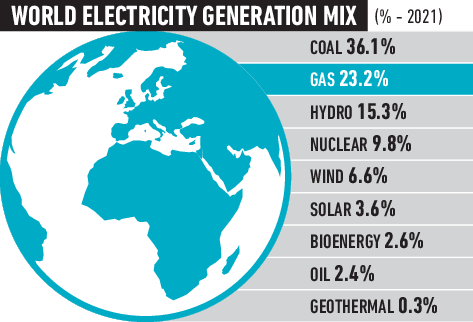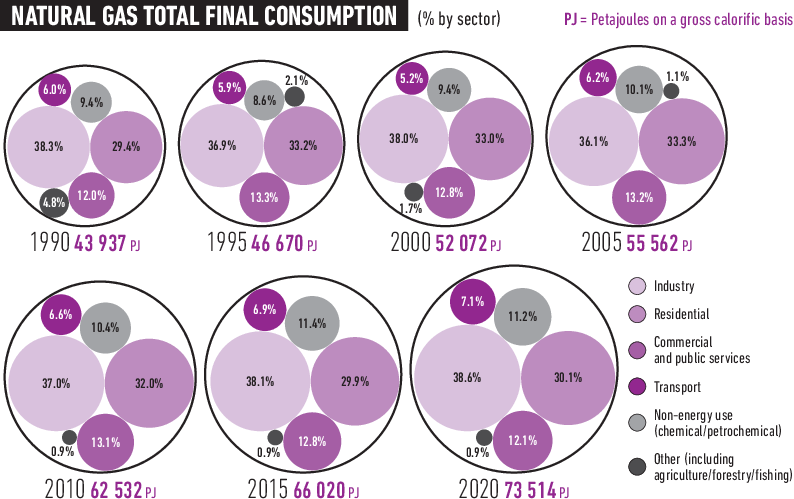
Energy Sources: Natural Gas
The origin of natural gas is similar to that of oil and often the two components are extracted from the same deposits. Natural gas is a mixture of different hydrocarbons: methane (predominantly), ethane, propane, butane etc. and is technically defined as "wet gas". Once purified, it becomes "dry". As it’s less dense than oil, gas tends to be in the upper section of the deposits, although the richest sources are generally deeper down. At current production levels, there are sufficient technically recoverable natural gas resources to last at least the next 235 years. The global long-term recoverable conventional gas resources are more than 400 trillion cubic metres (tcm); in addition, other 400 tcm are estimated for unconventional resources.
Among the top-three primary energy sources in the world, together with oil and coal, natural gas is a relatively accessible and reliable resource. It’s precisely for this reason that work is being carried out in all industrialised countries to adapt technologies to its increasingly diverse use: from the traditional field of heating to that of cooking food; from the production of electricity in power plants with steam turbines (or gas turbine) to uses in industrial sectors where a direct flame it is essential and from uses as a motor fuel to uses in the processes of chemical and pharmaceutical synthesis
- EIA (US Energy Information Administration), International Energy Statistics [Last accessed 20 December 2022];
- IEA (International Energy Agency), Energy Statistics Data Browser [Last accessed 20 December 2022] • World Energy Outlook 2022
